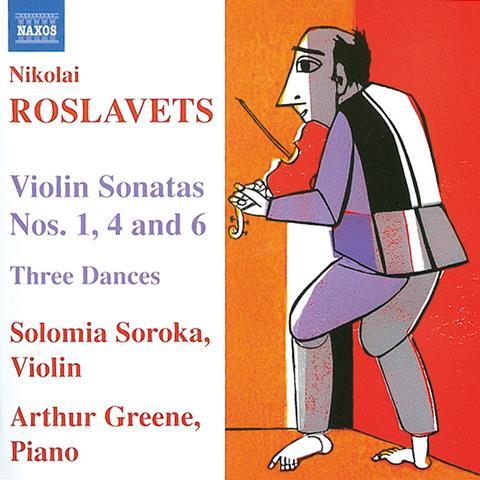
The Strad Issue: January 2006
Musicians: Solomia Soroka (violin) Arthur Greene (piano)
Composer: Roslavets
Nikolai Roslavets (1880–1944) was a key figure in early 20th-century experimental Russian music. He flourished during the immediate post-Revolution years, but fell from grace when Soviet cultural policy shifted dramatically under Stalin.
The Three Dances, published in 1923, embrace a haunting waltz, vivid nocturne and vital mazurka. Here, Solomia Soroka seems utterly confident, catching a haunting, languid quality within Roslavets’s elusive harmonic idiom. The Nocturne is laced with double trilling that recalls the florid decorations the violin virtuoso Pawel Kochanski had helped Szymanowski to explore; and Soroka brings out nicely an element of bravado, both in the Mazurka and in the three forceful sonatas.
Soroka shines especially near the close of sonata movements, where her lyricism pays dividends as Roslavets frequently relaxes the turbulence prevailing elsewhere. There are a few cases of awkward tuning (the slow movement of Sonata no.6 includes several), occasioned by the severe angularity of the composer’s leading melody. On occasions her partner, Arthur Greene (currently professor of piano at Ann Arbor, Michigan), seems so soundly versed in this music that the piano invariably prepares and articulates beautifully, while Soroka seems more tentative about what best to emphasise in Roslavets’s wayward line.
Still, if the composer’s twining, cantilena-like melodic line sometimes defeats her, Soroka counters with some striking dramatic effects in Sonata no.6, and she relaxes particularly well into the spirit of the single-movement Fourth Sonata, while the experimental First Sonata, with its energetic cross-currents, yields an exciting culmination from both players. This is not easy or lightweight music, but this decently engineered recording certainly makes a handsome introduction to Roslavets.
Roderic Dunnett
































No comments yet